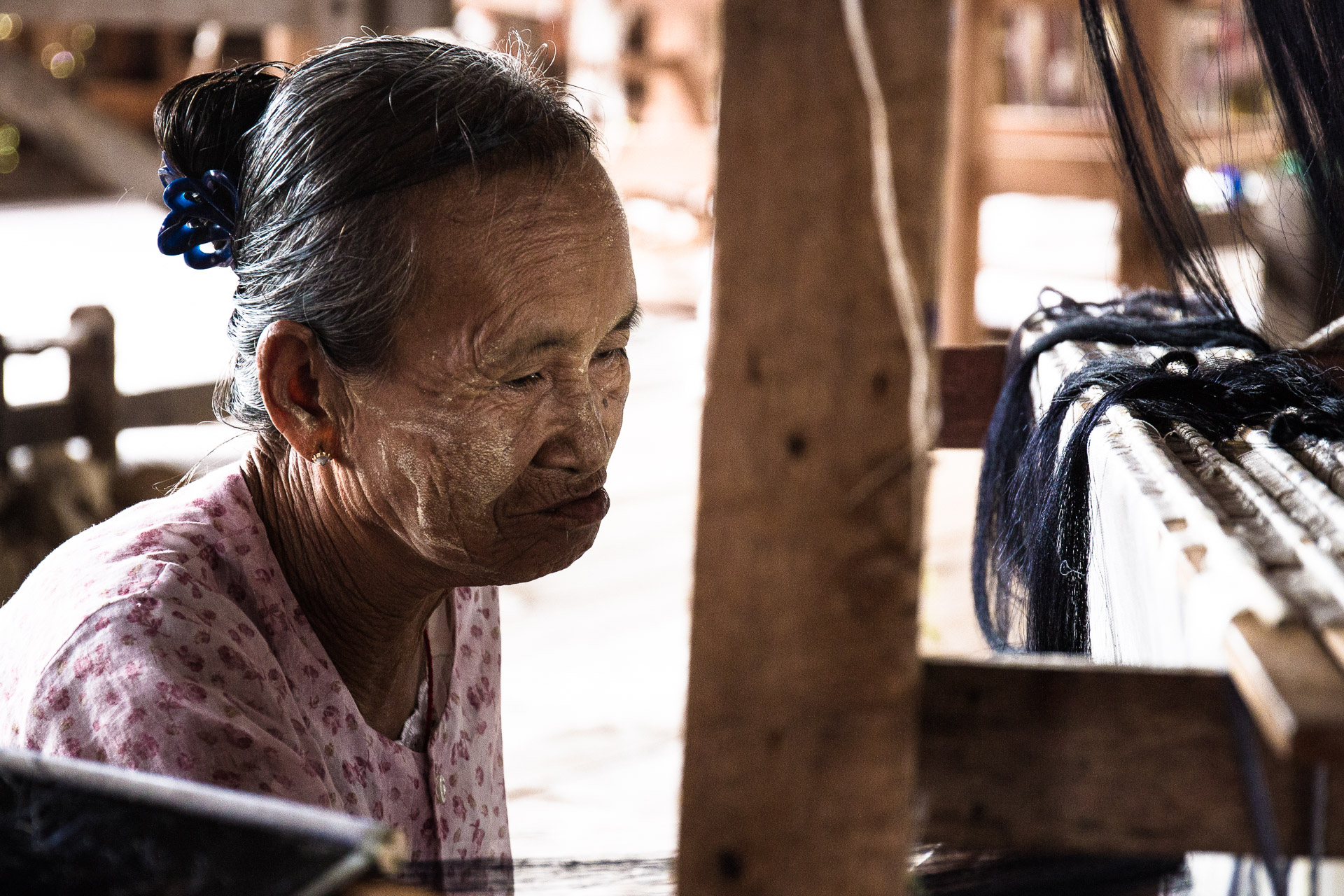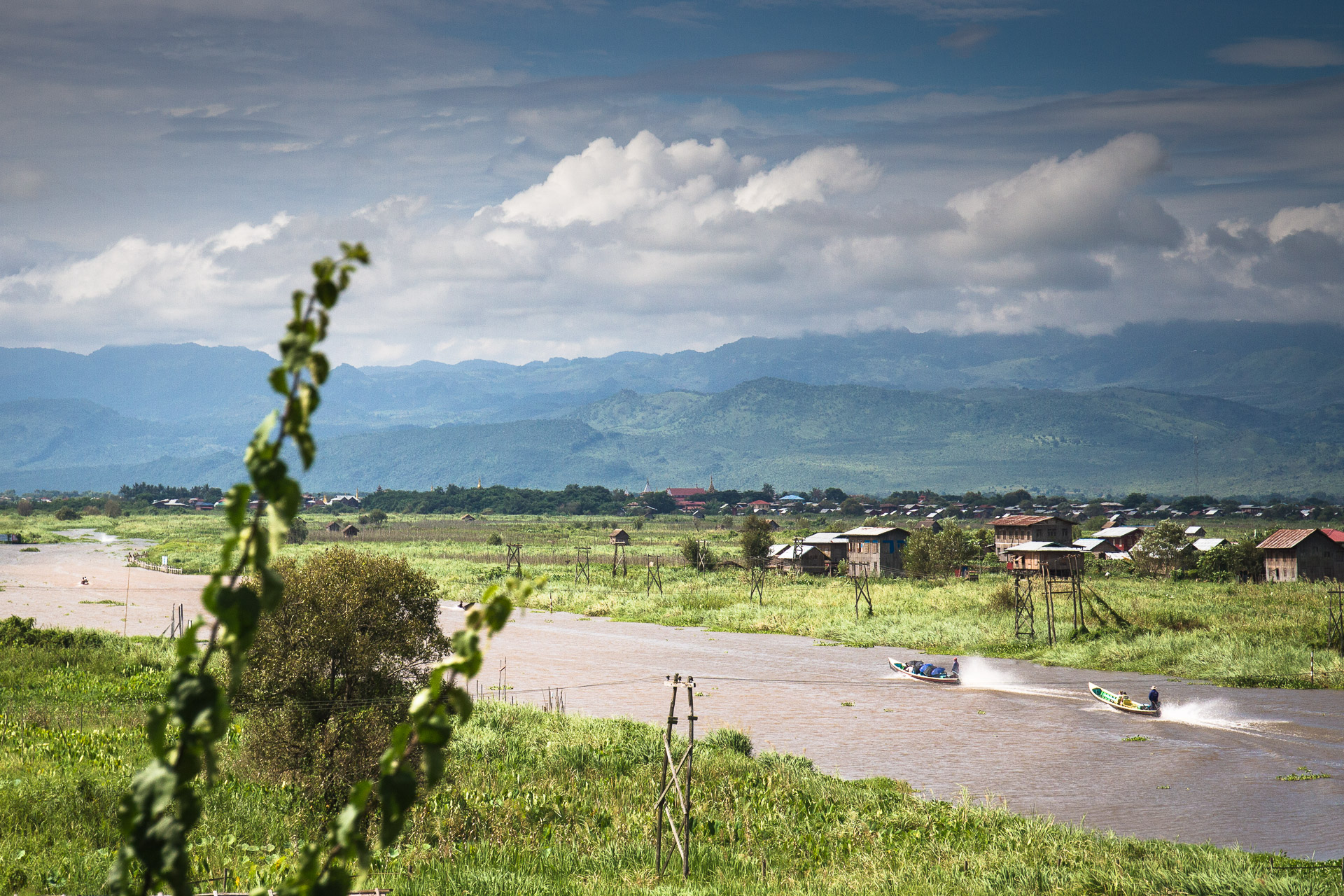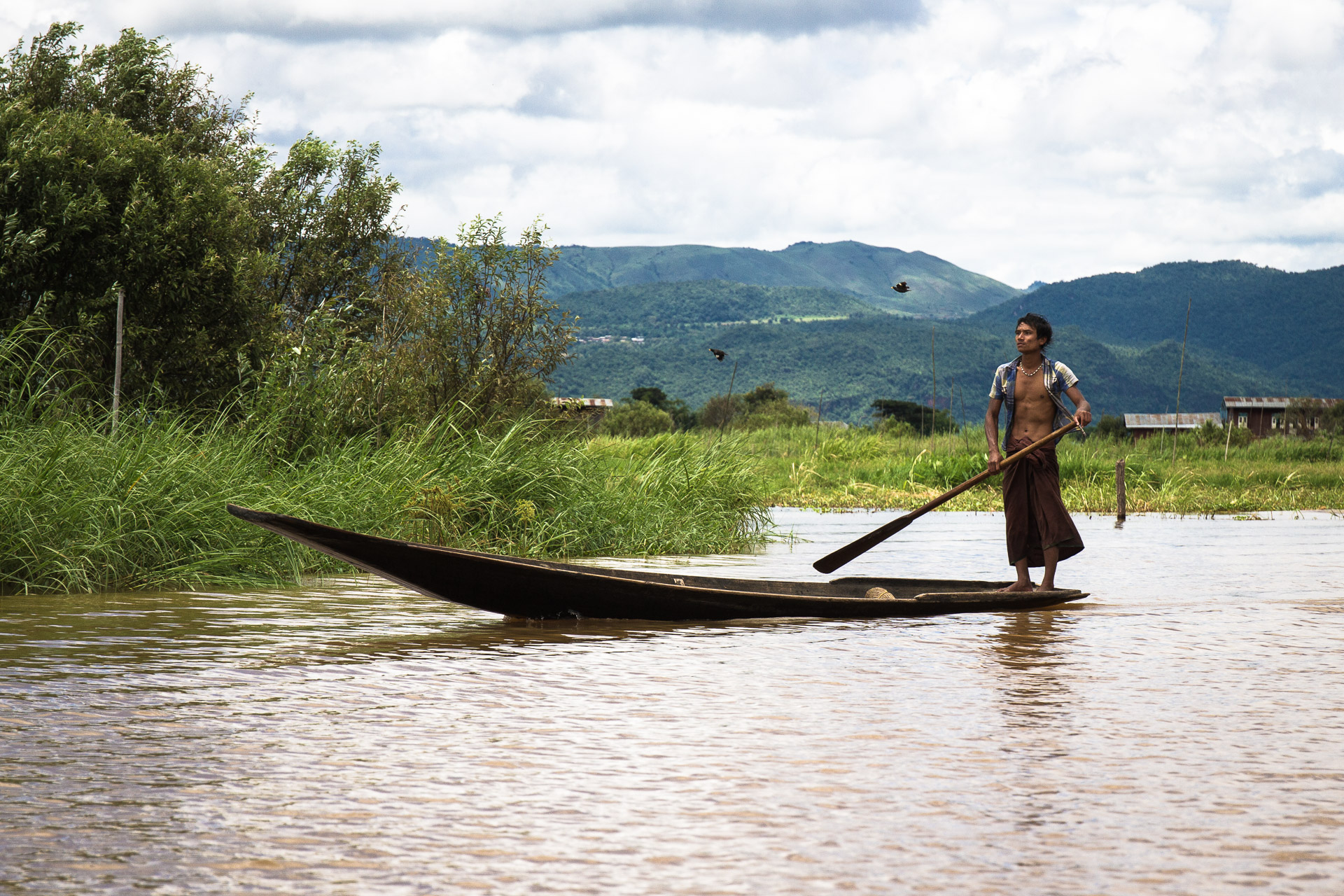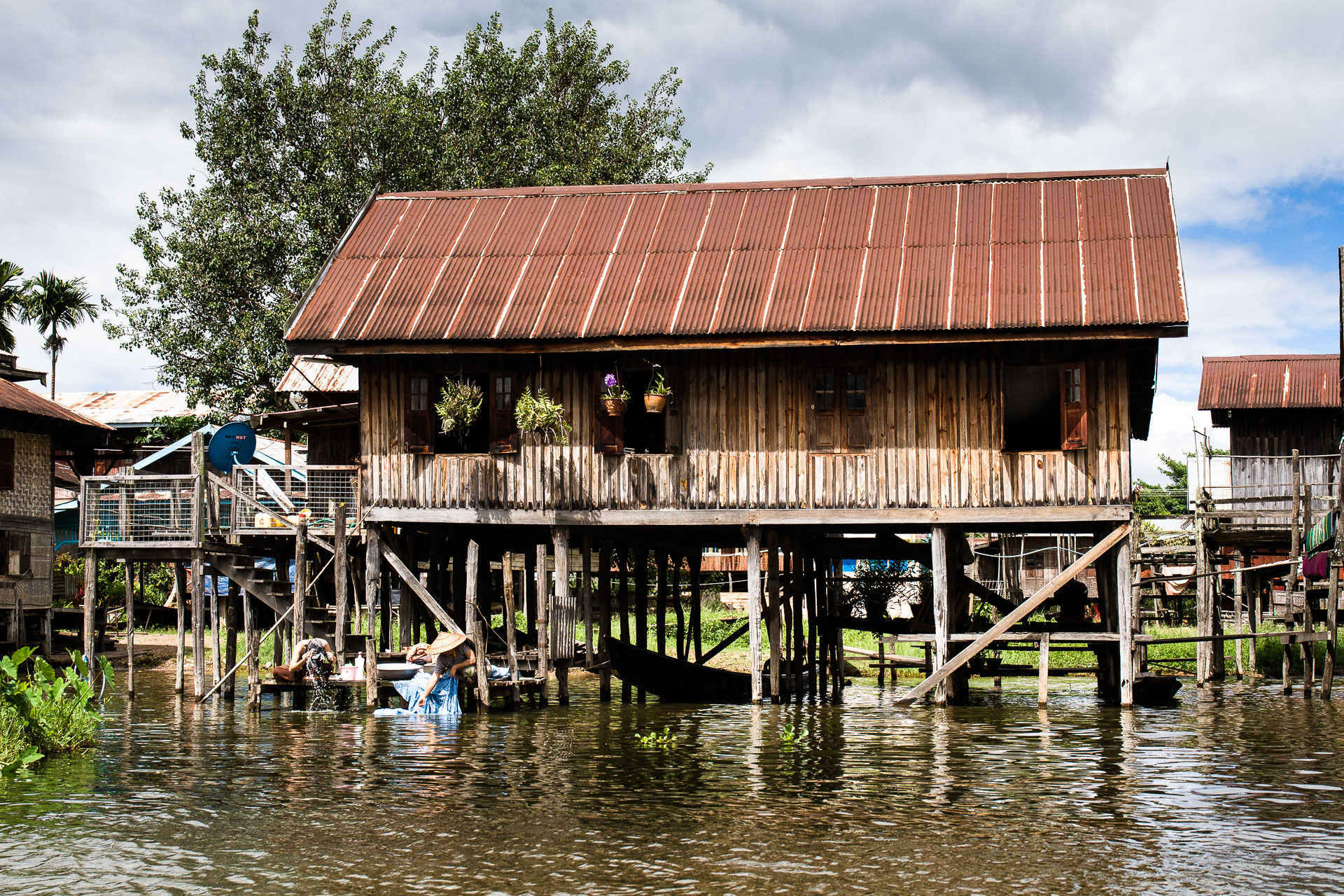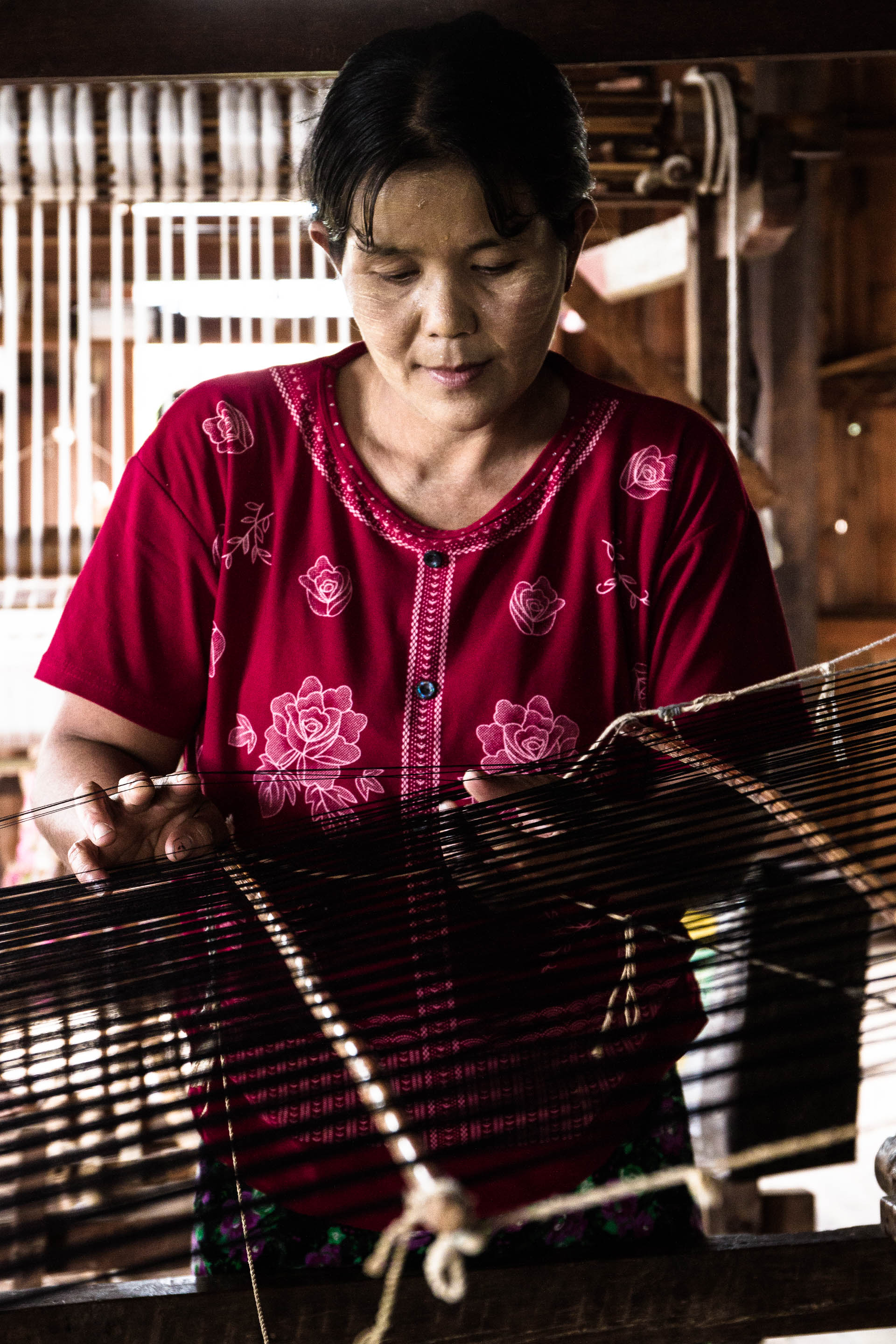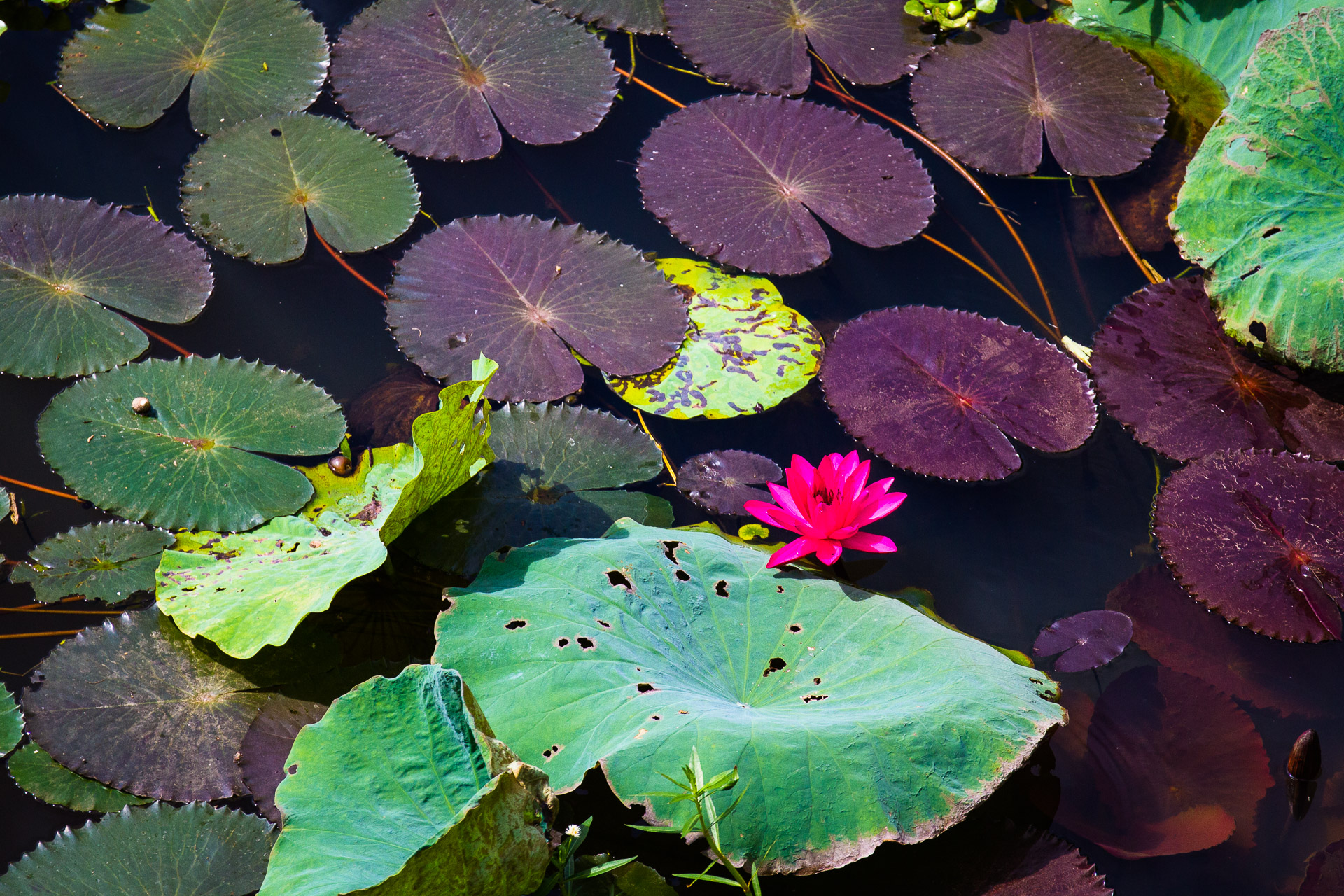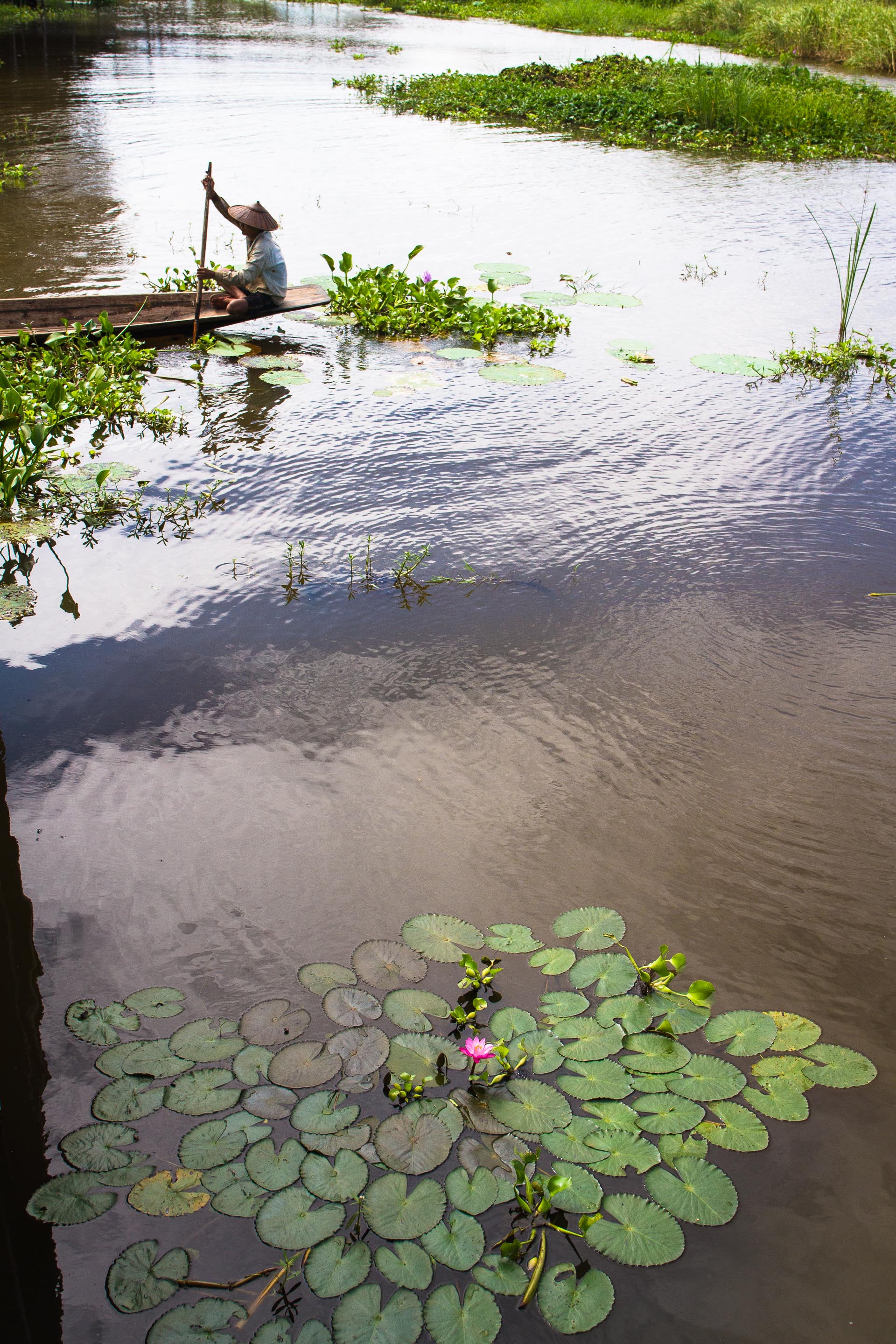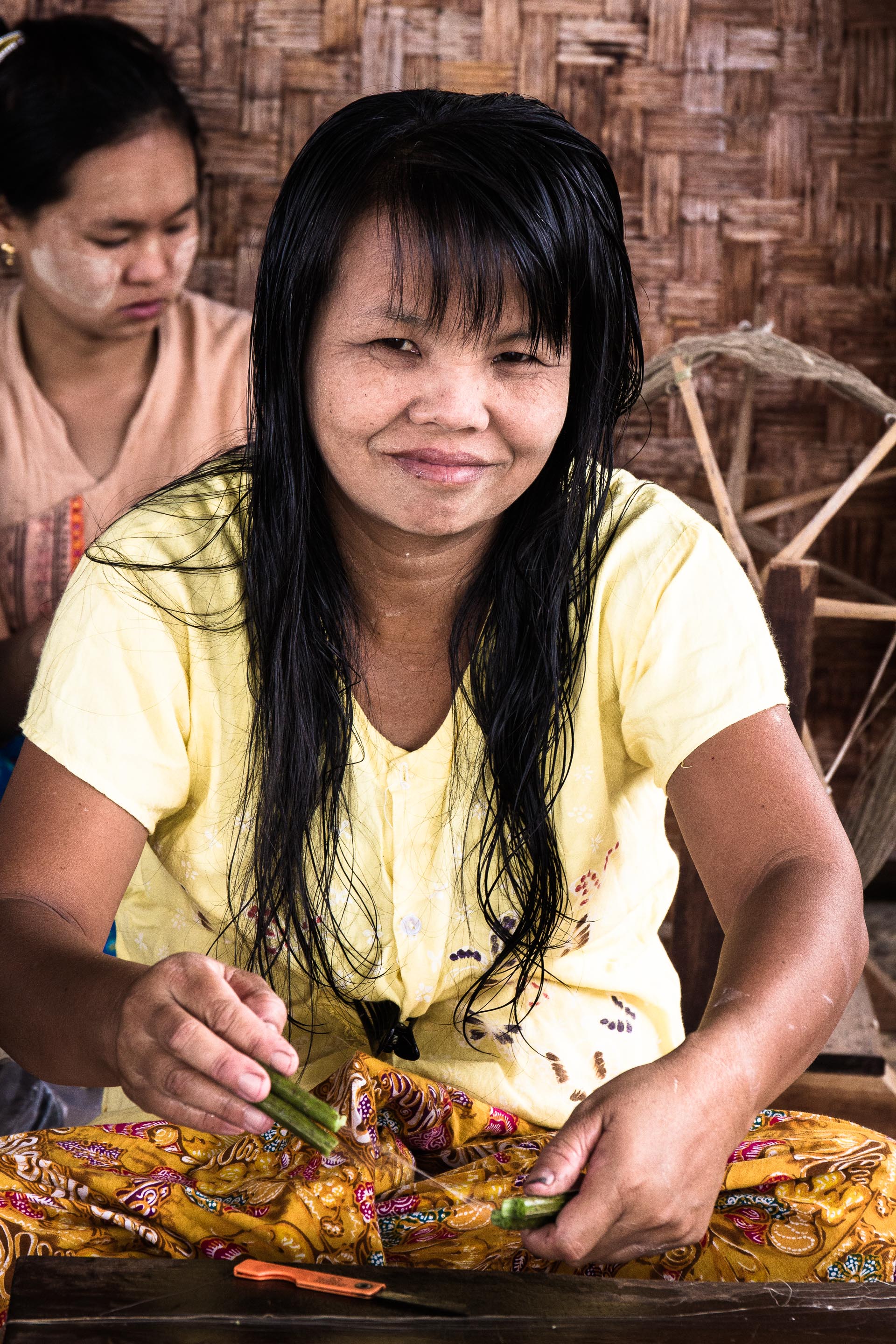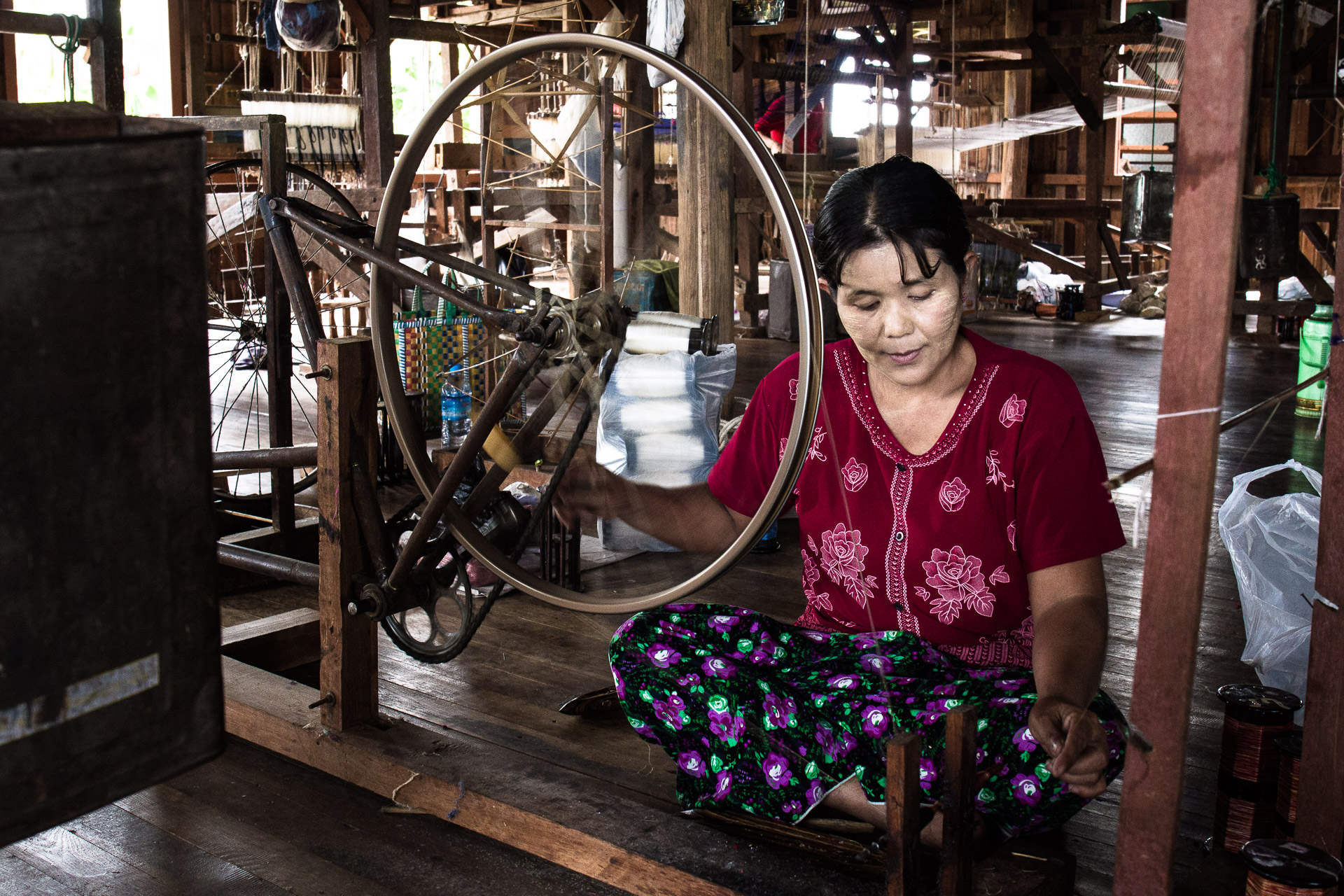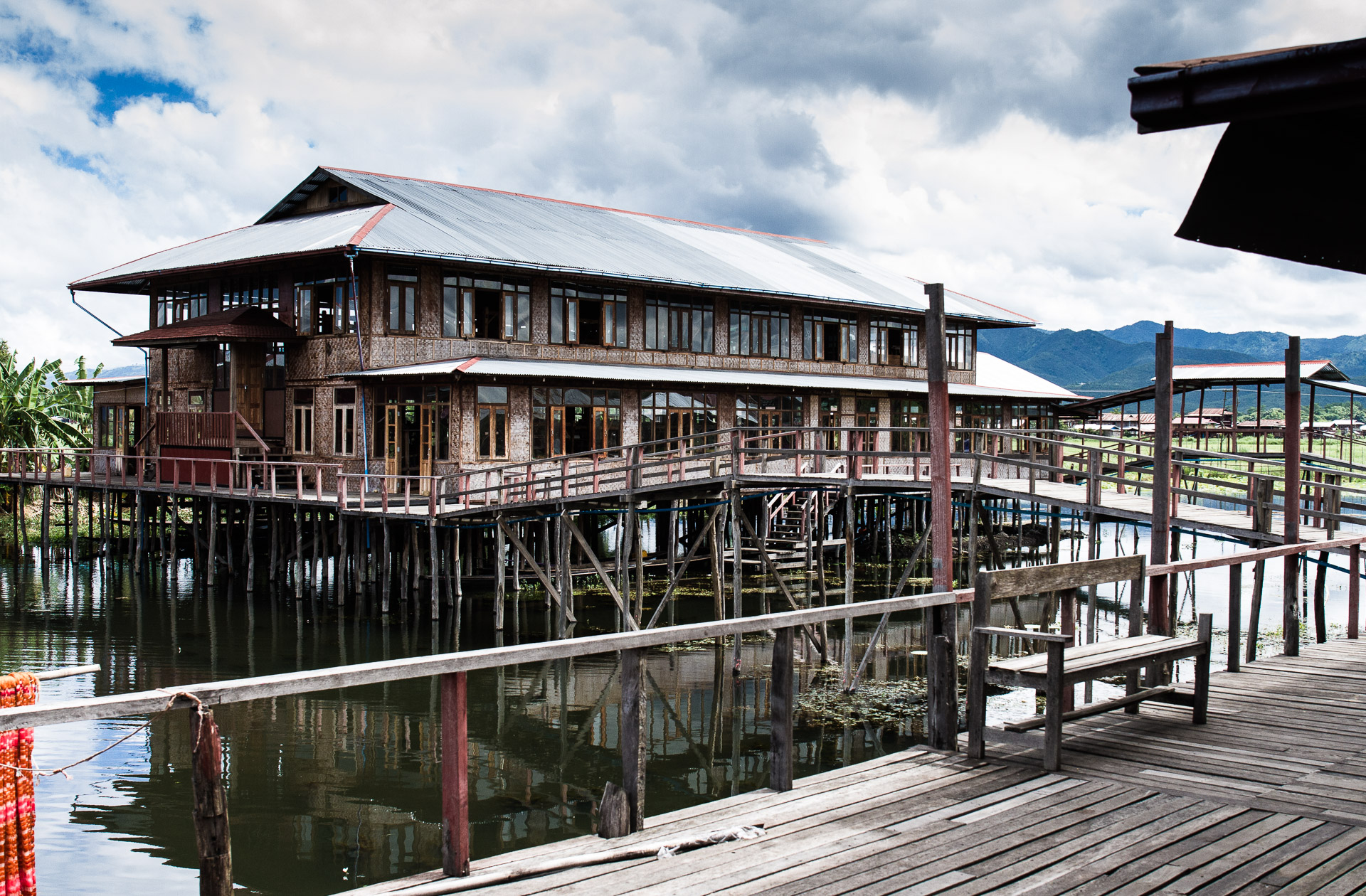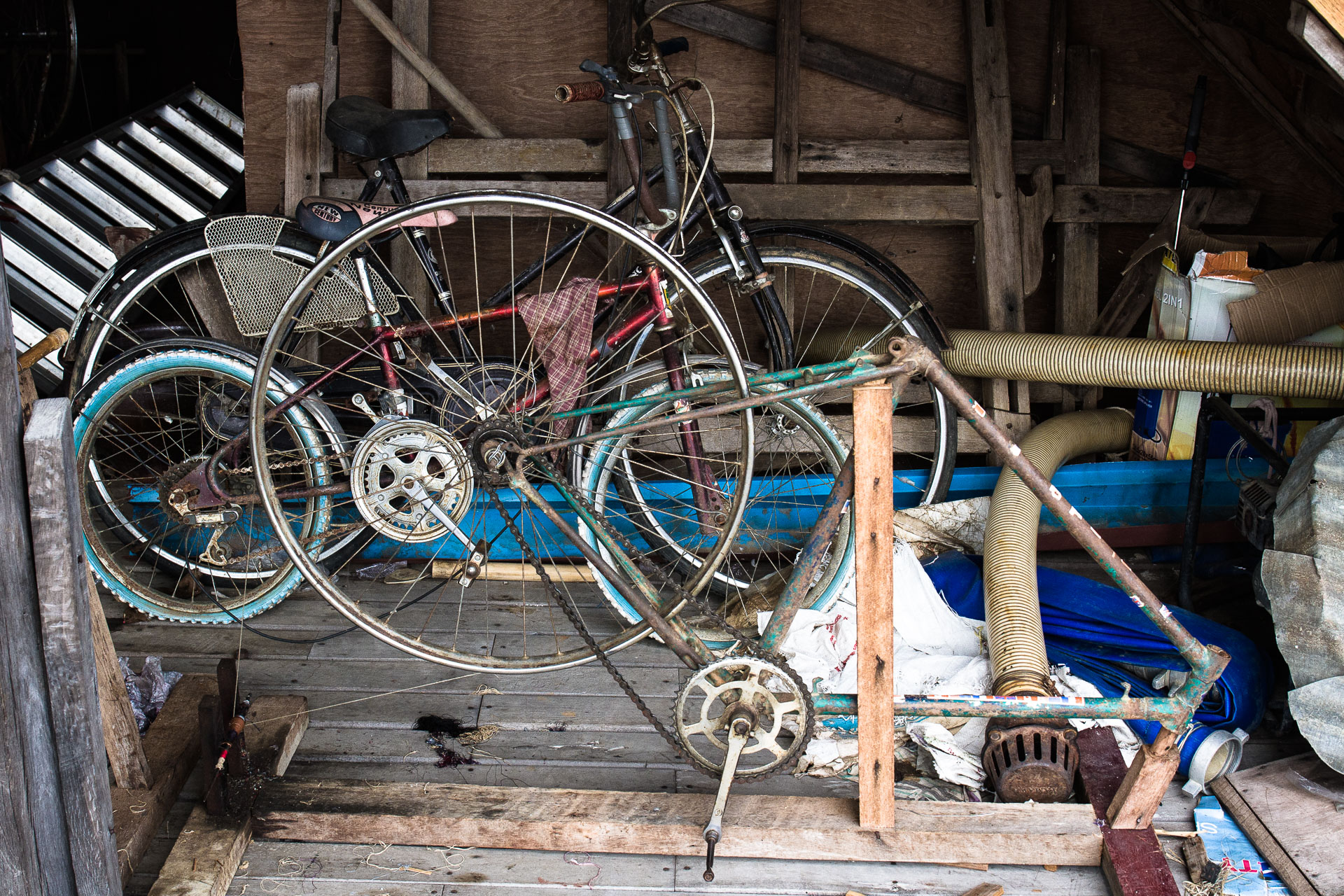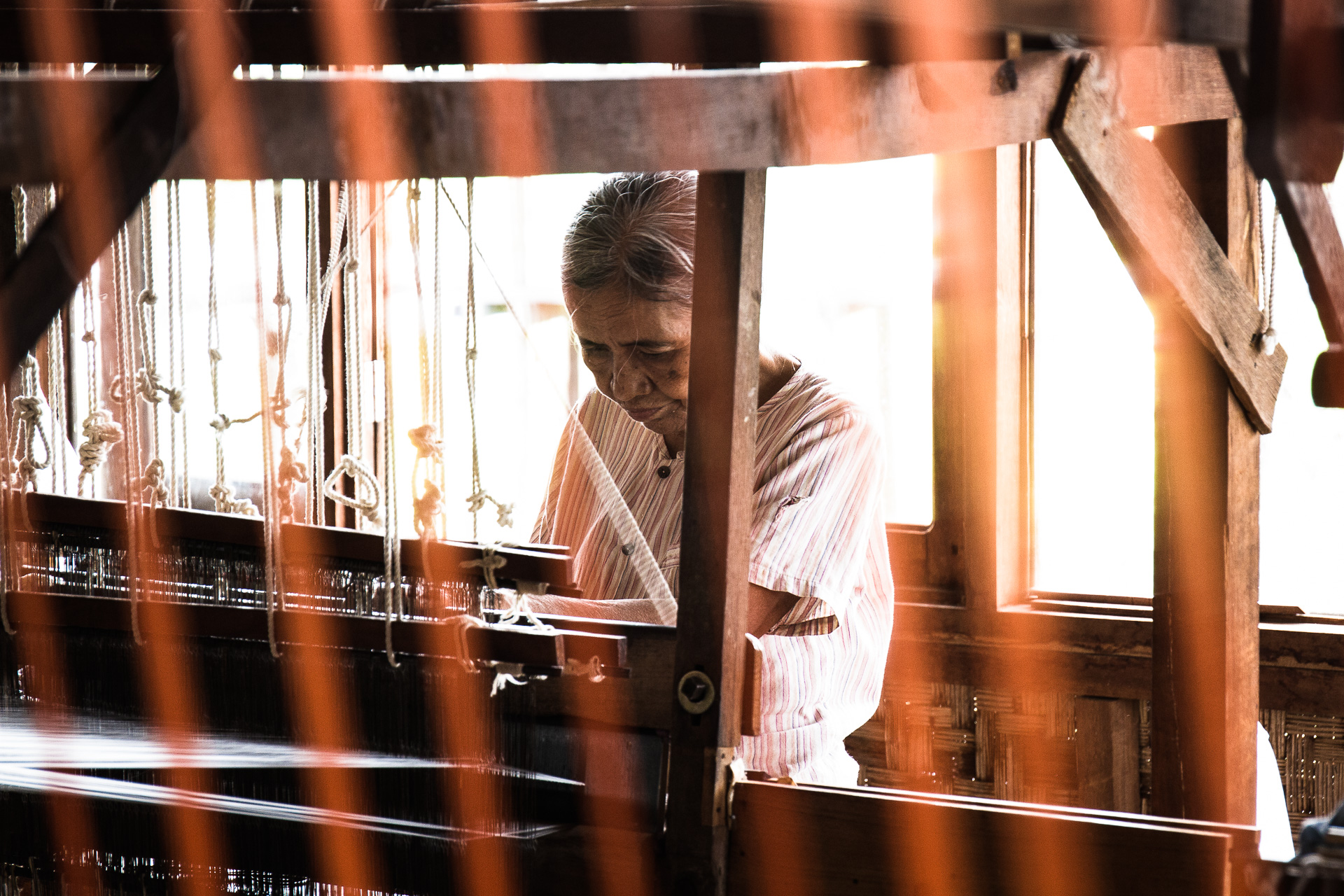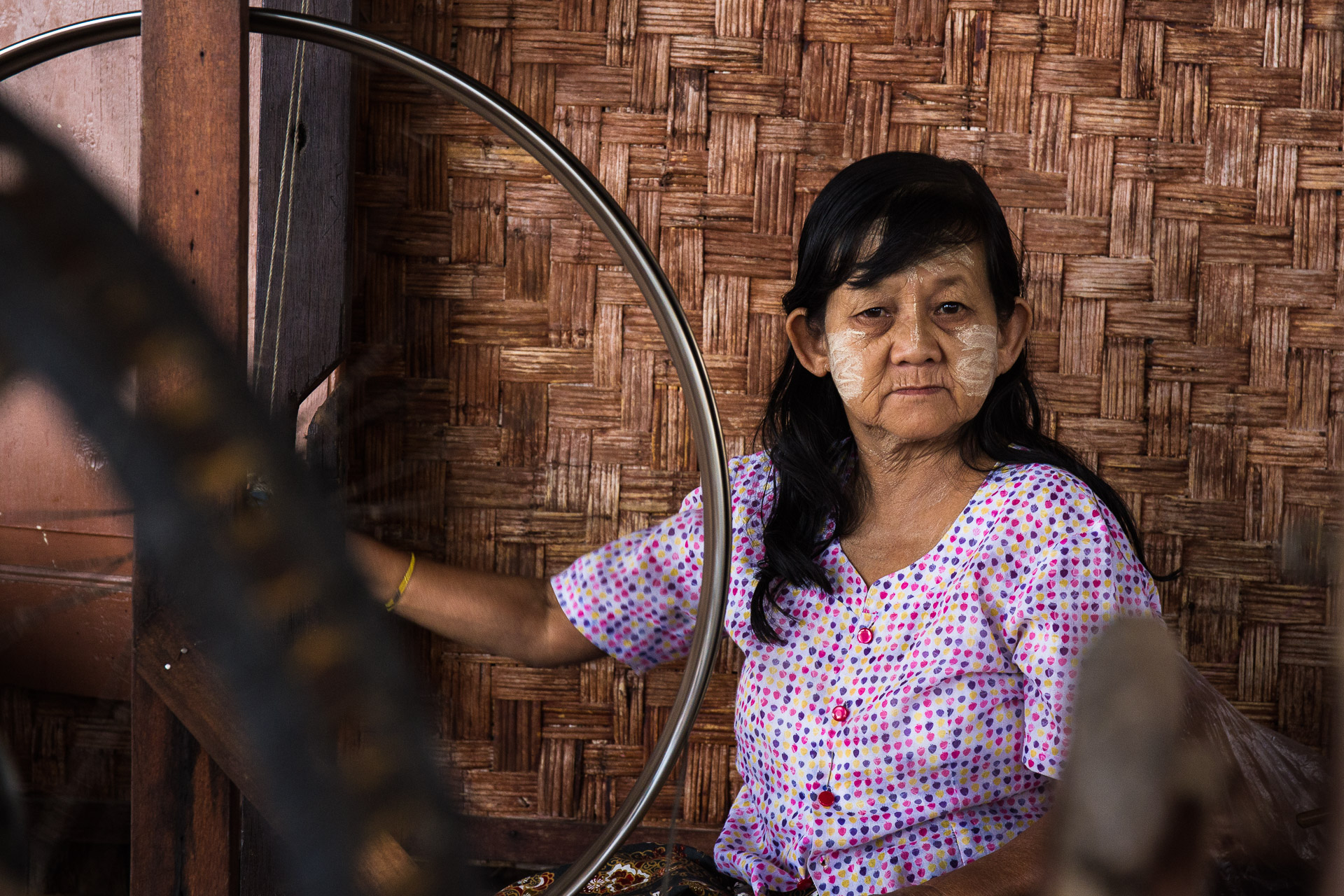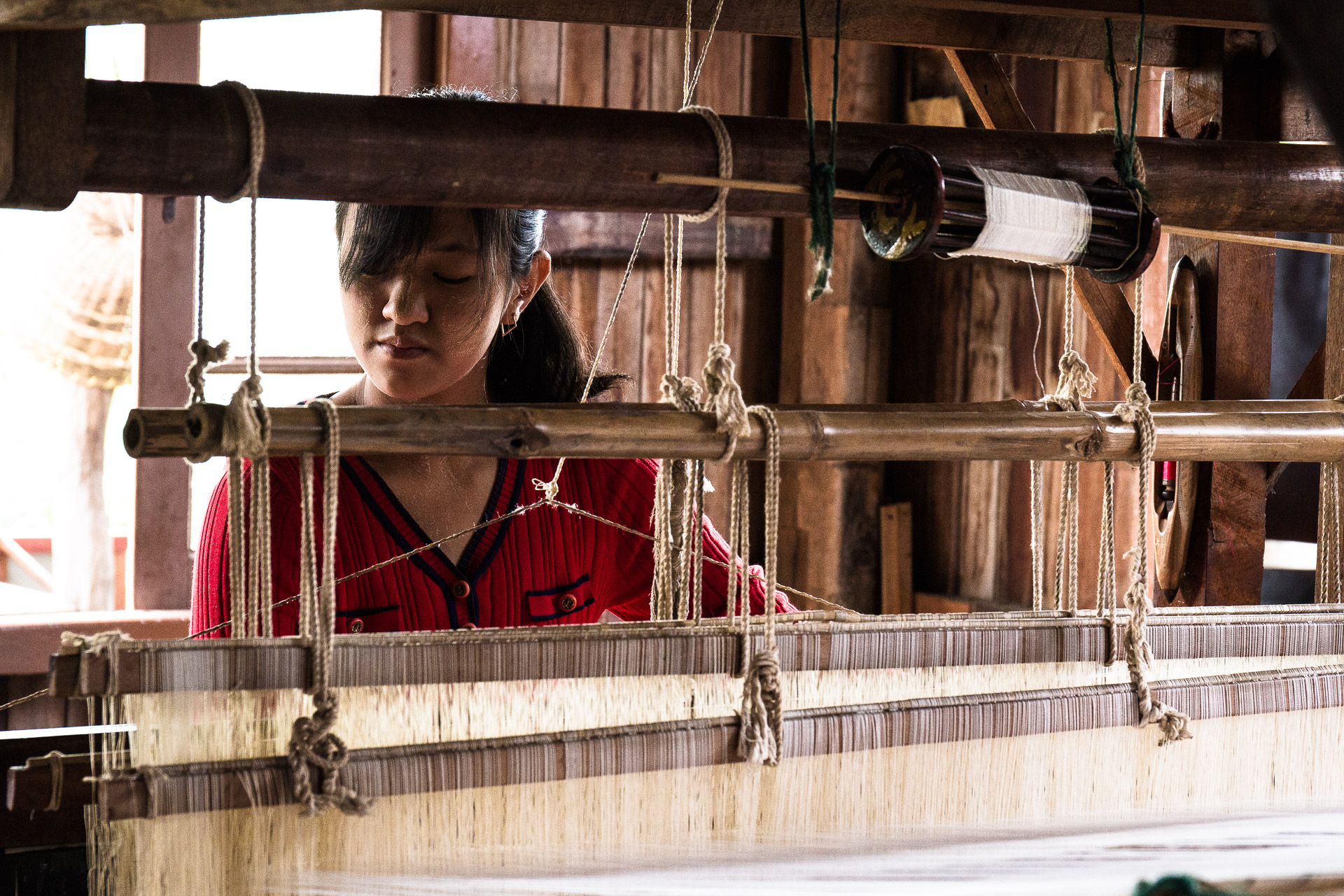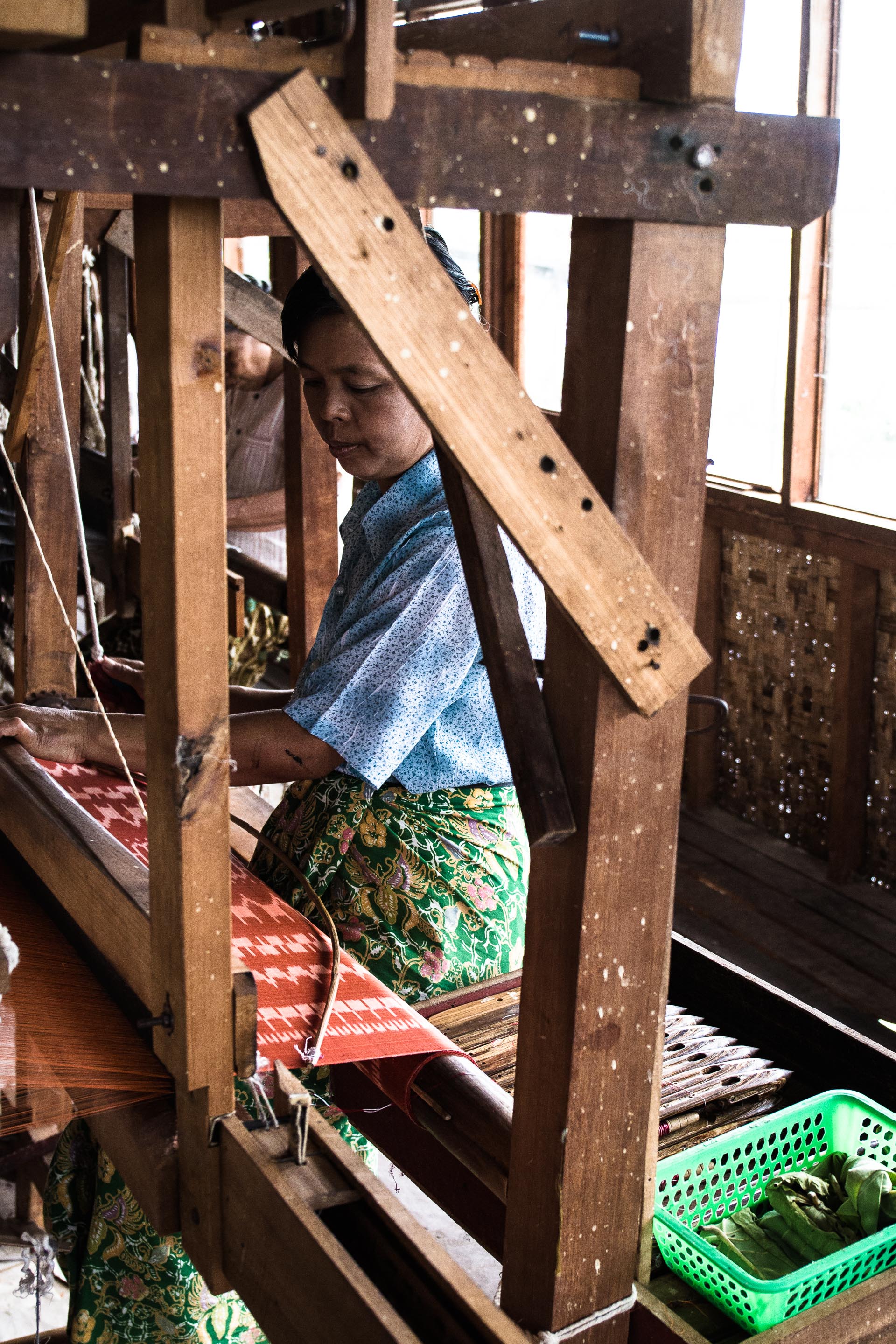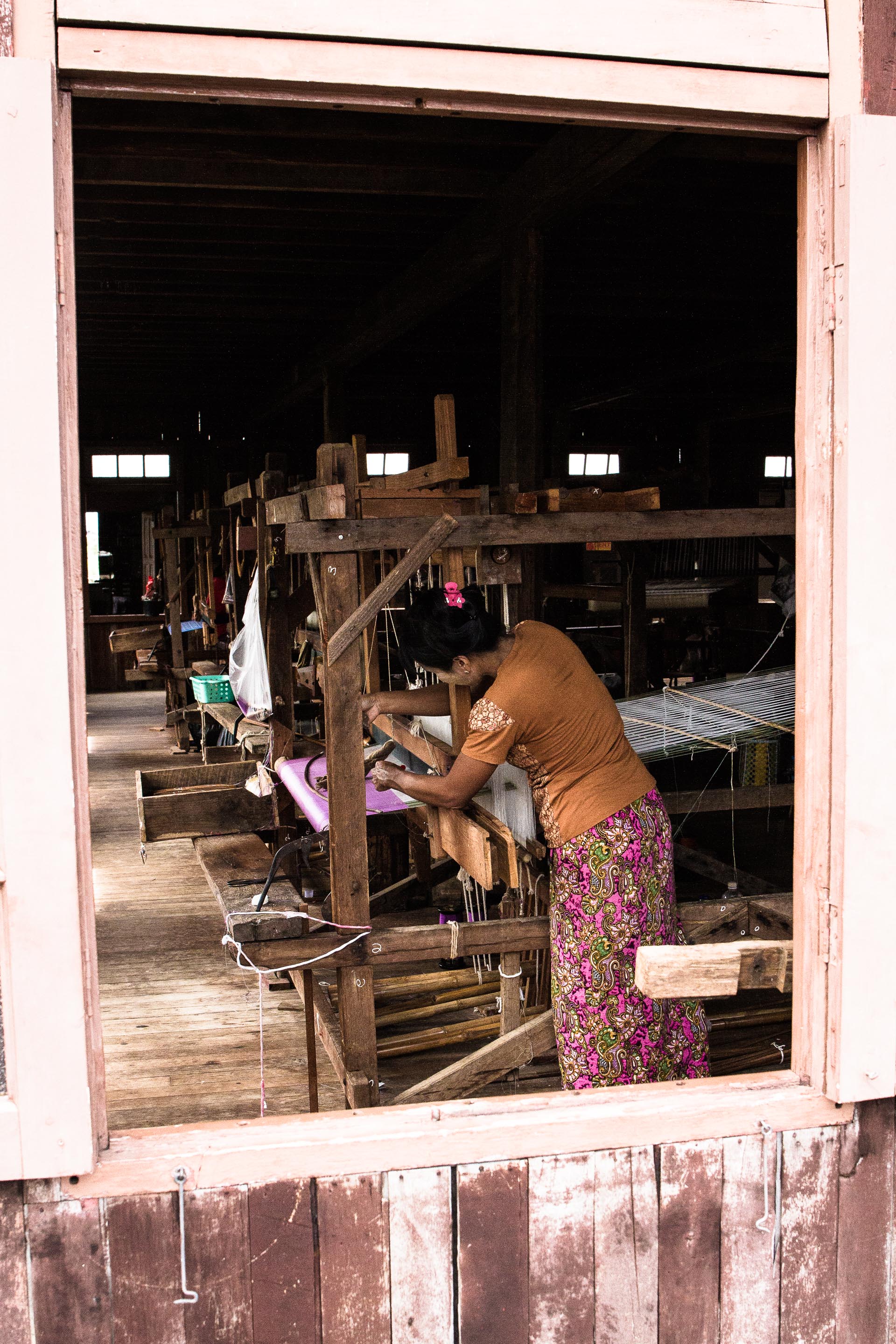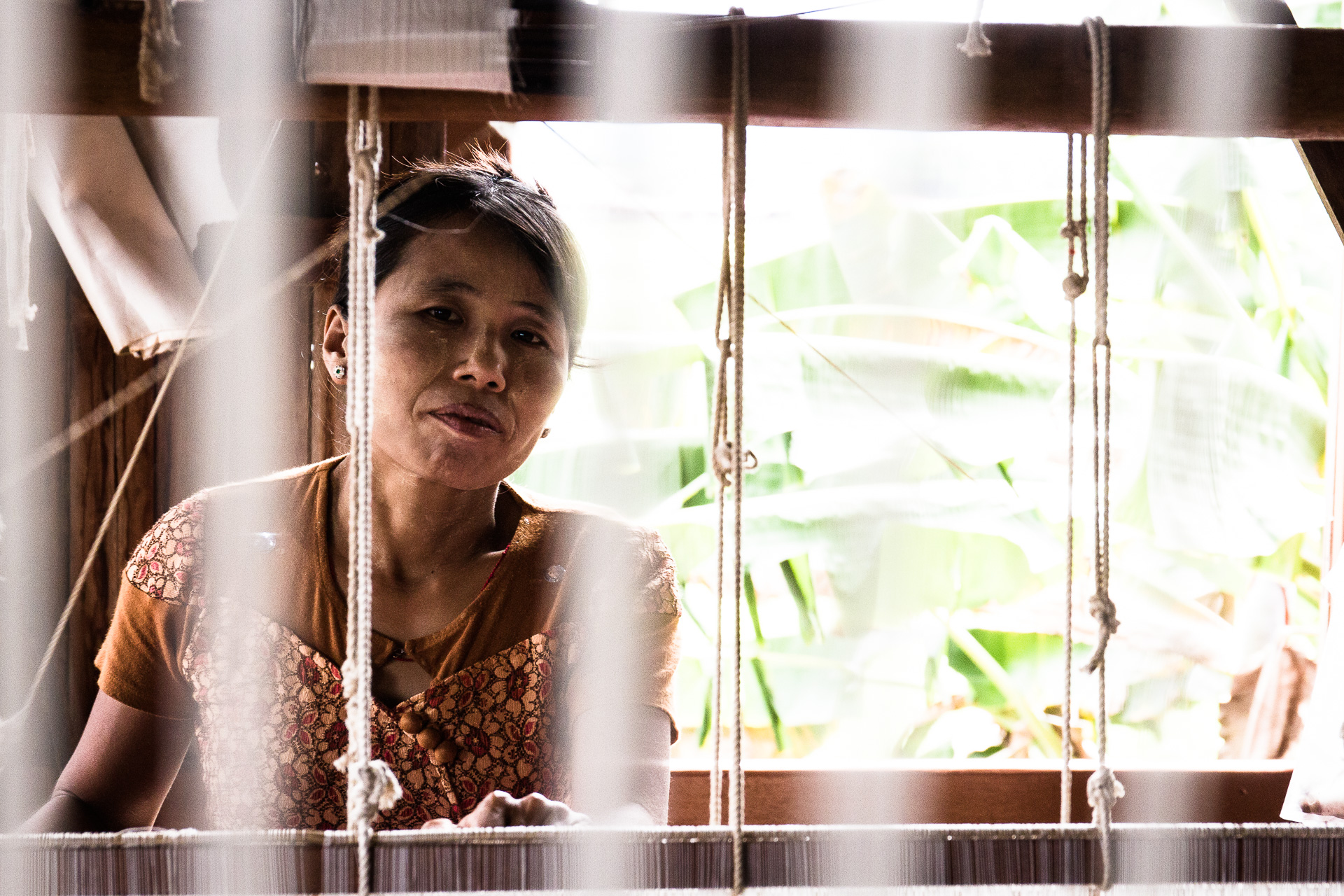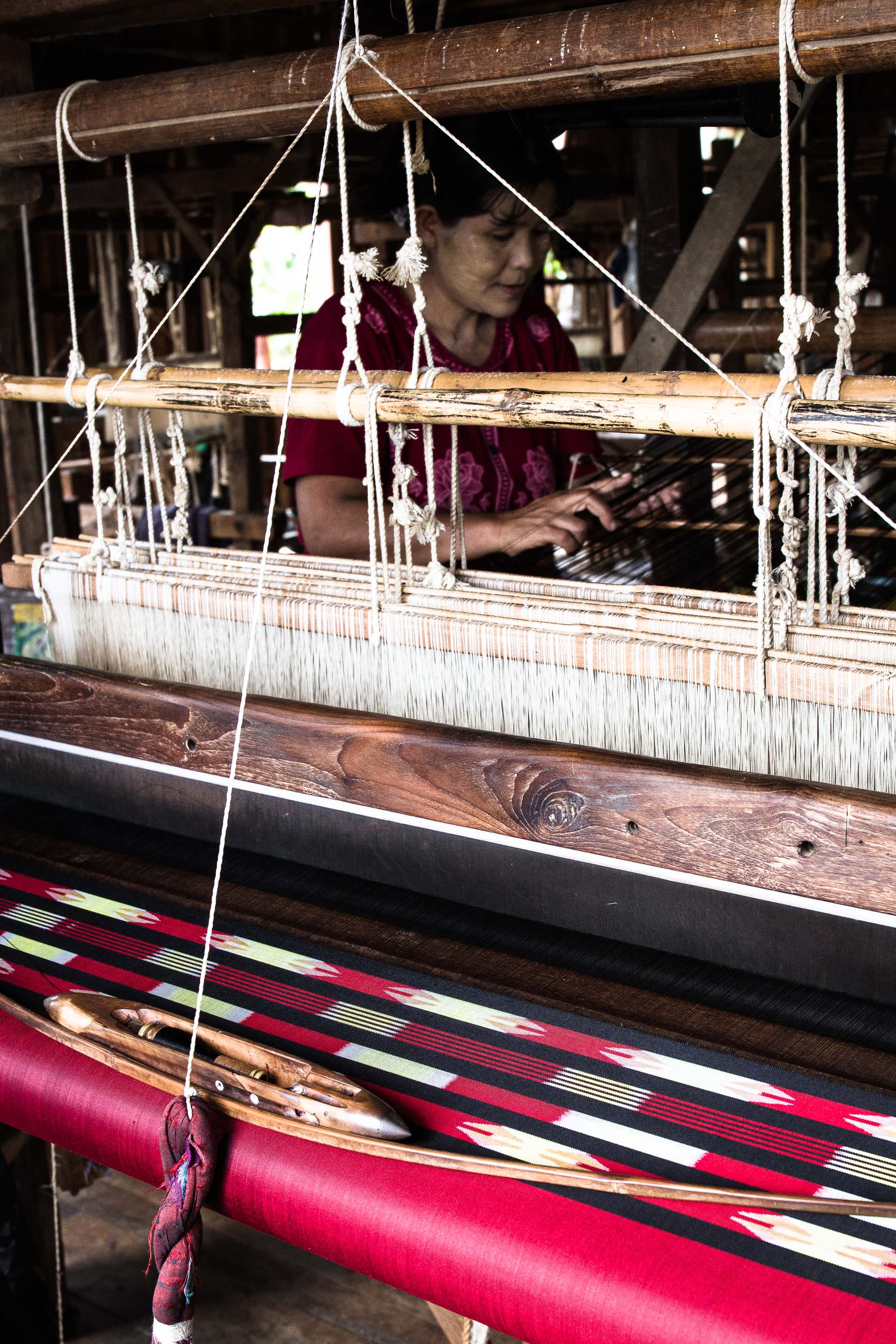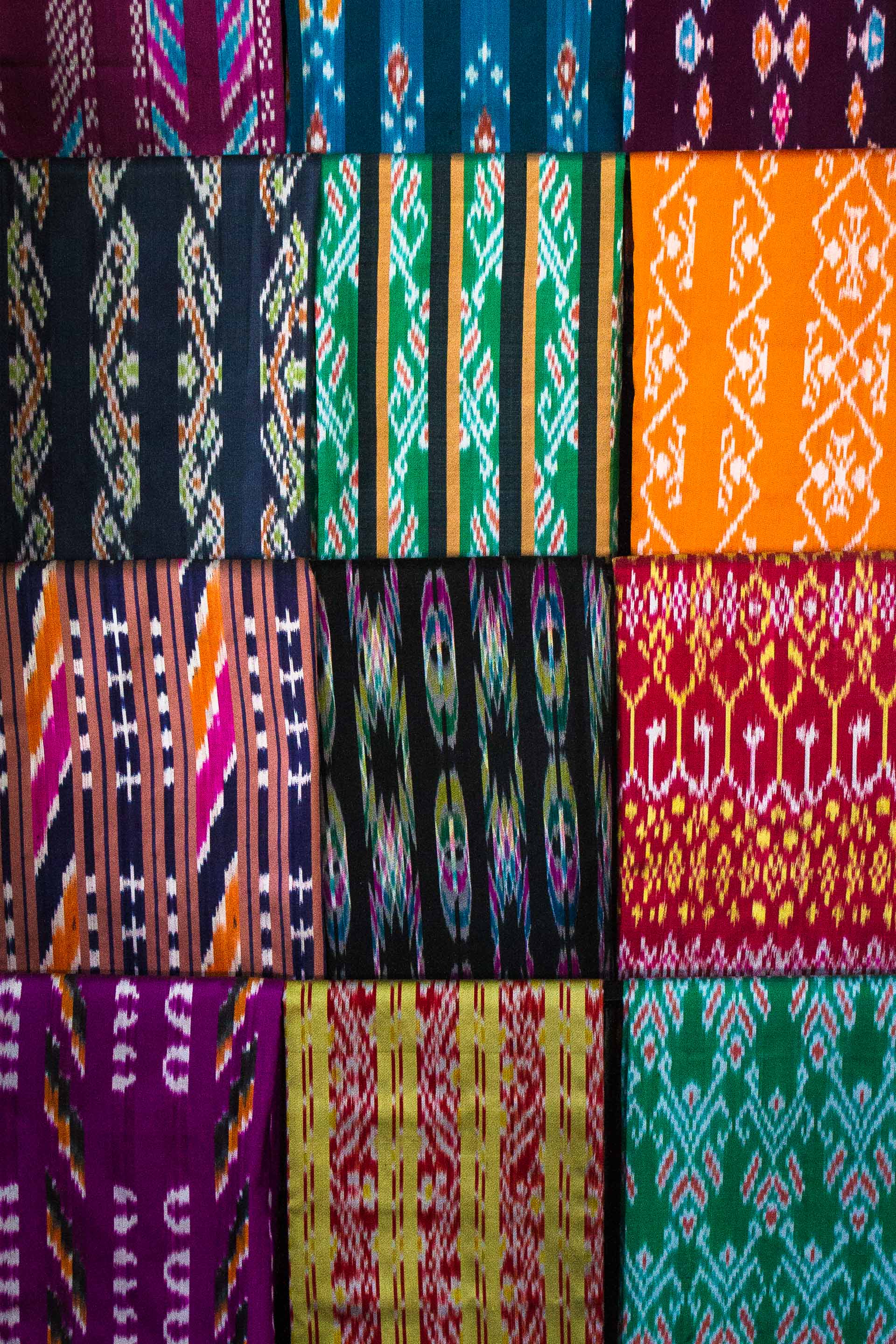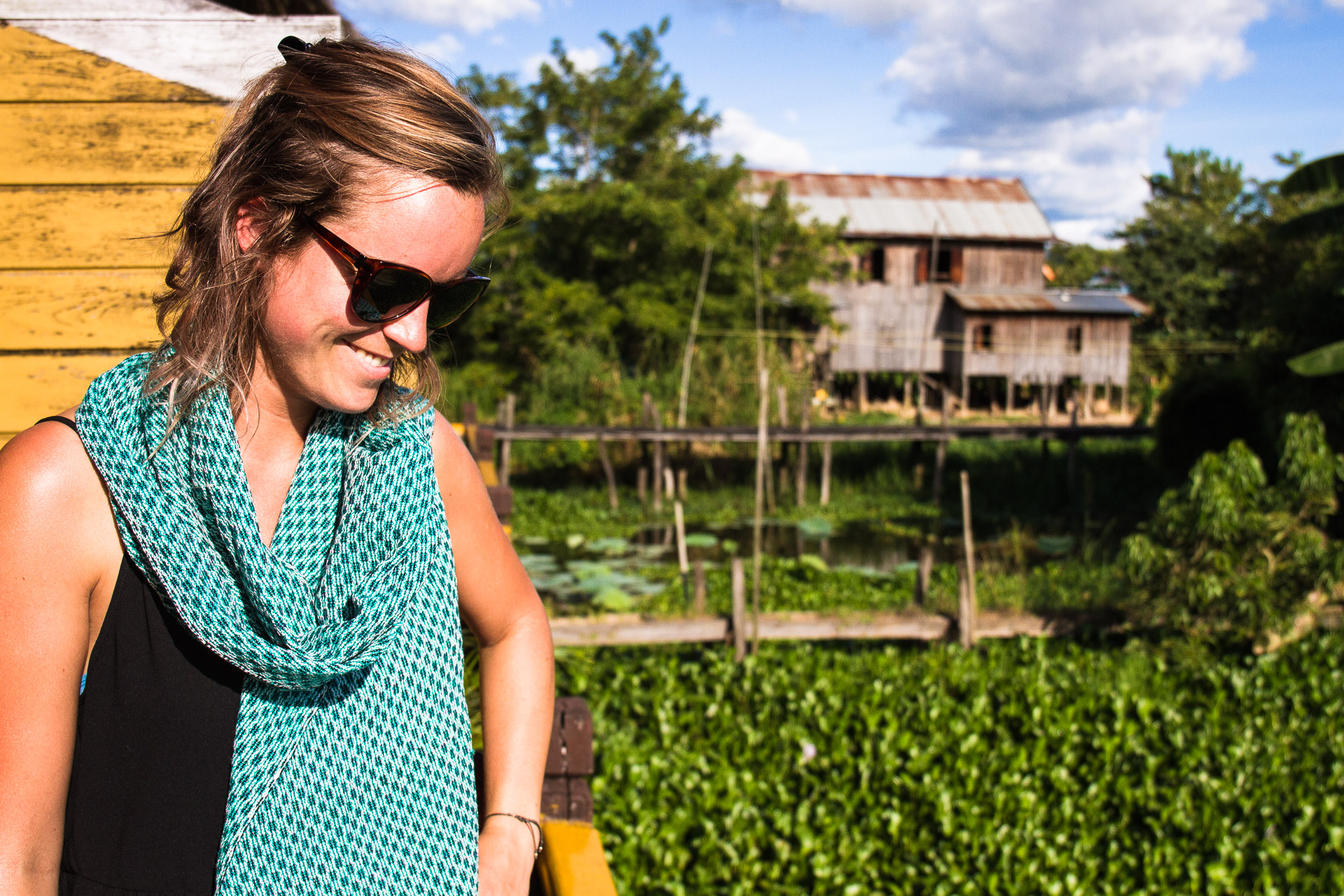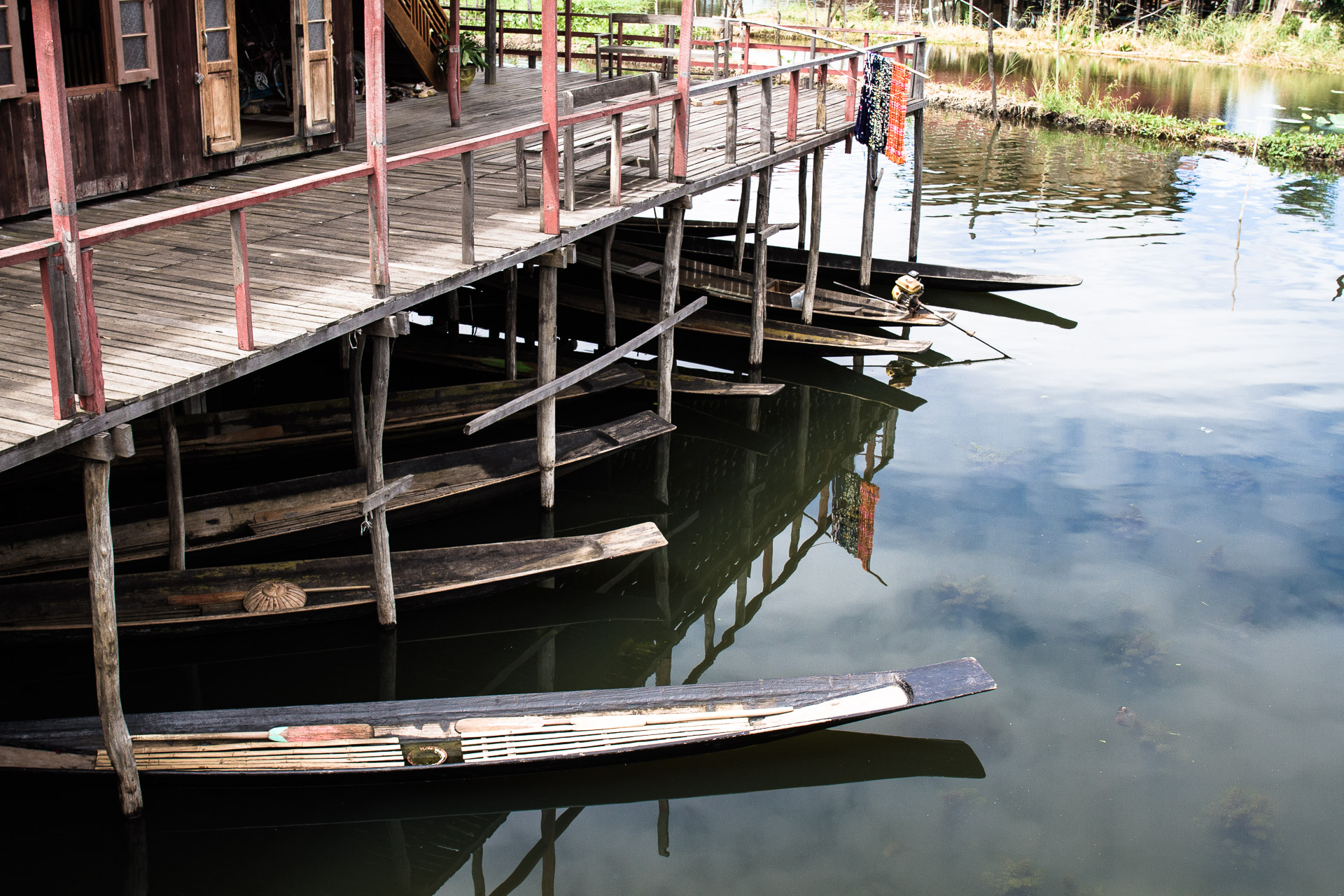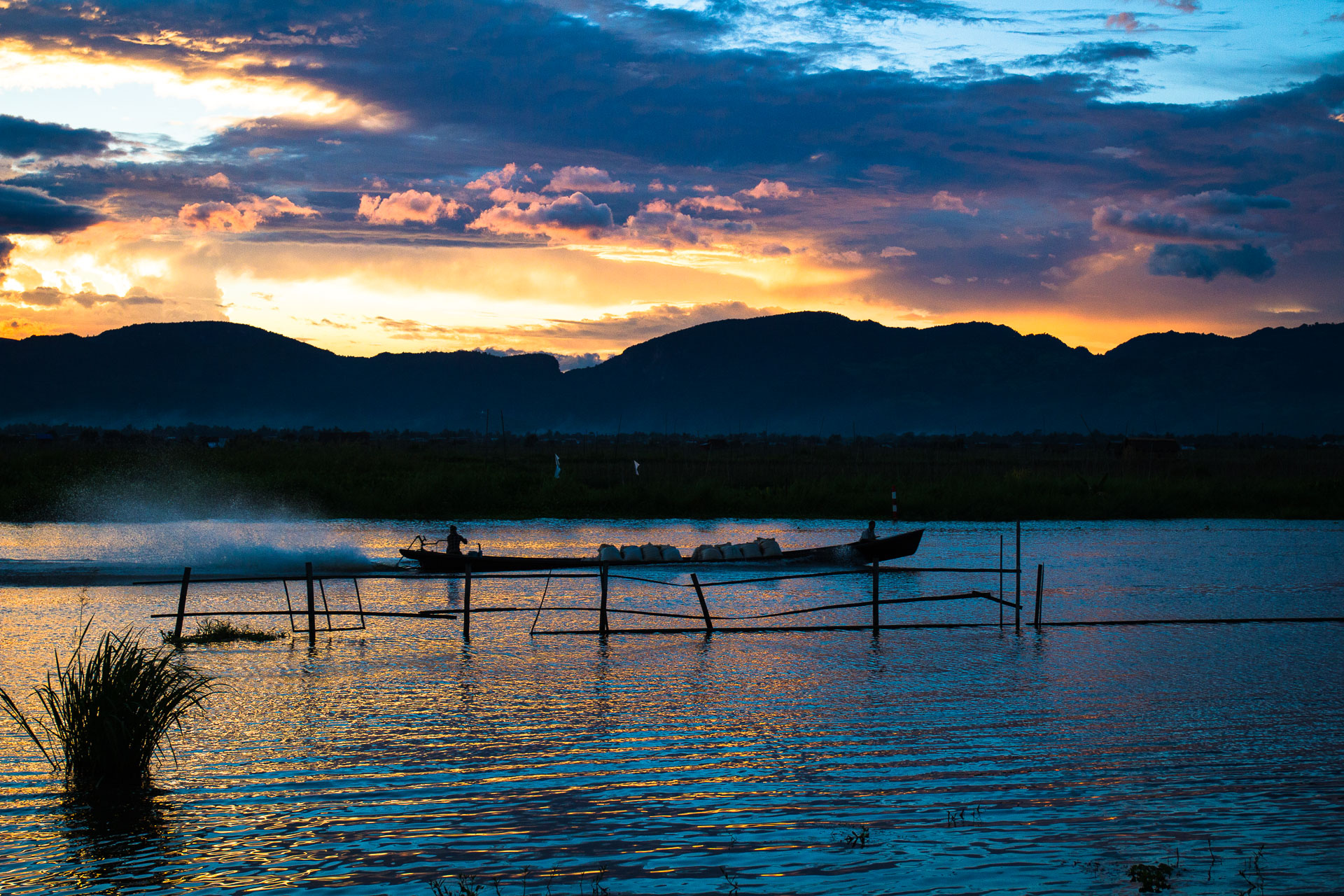Inle Lake in Myanmar (formerly known as Burma) is a huge freshwater lake surrounded by mountains around 500 kilometres north of Yangon.
The lake is massive (over 20 kilometres long and 10 kilometres wide) but fairly shallow. So much of it is covered in reeds that it can be quite hard to tell where the land ends and the water begins.
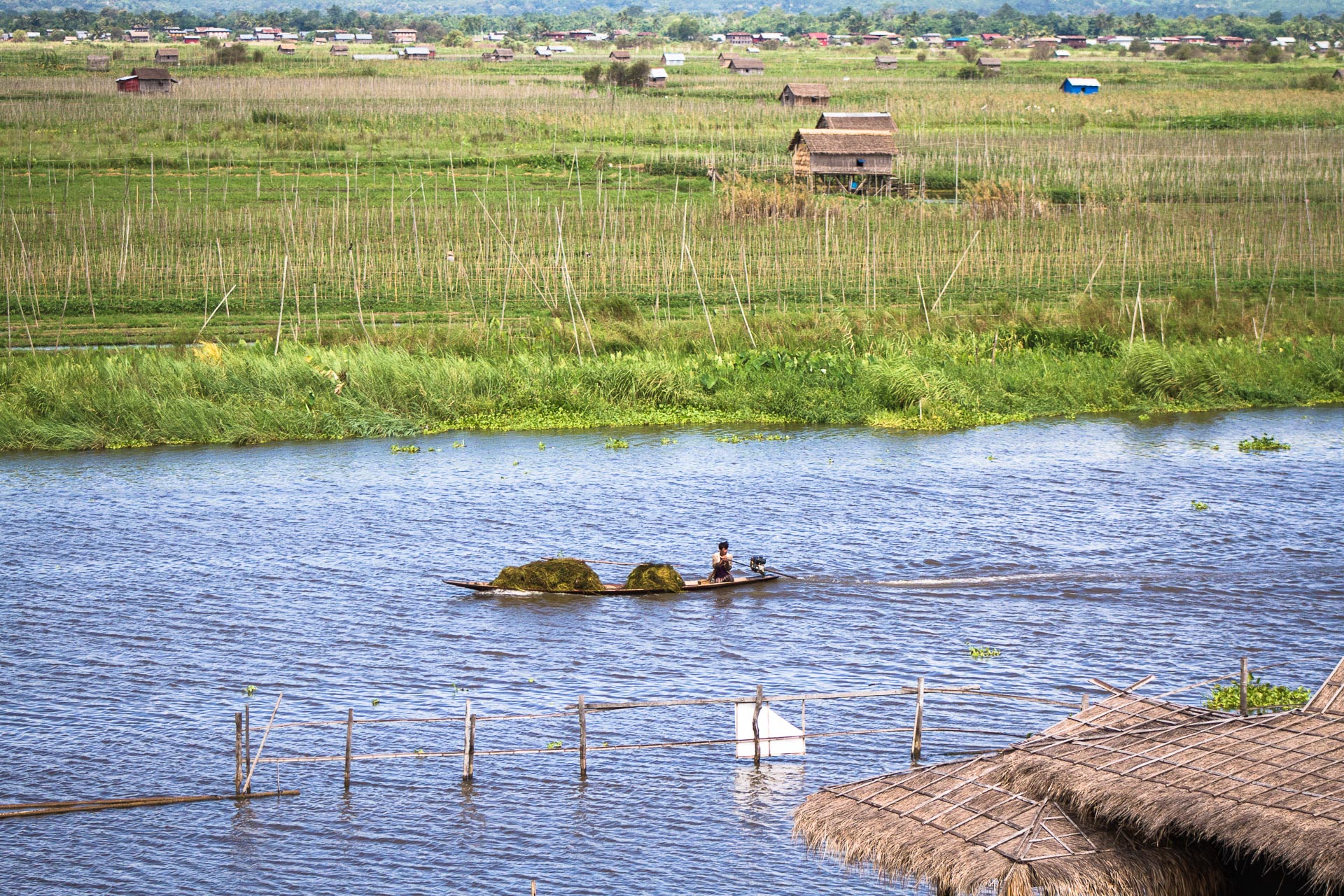
Many of the locals who call this watery world home actually live out on the lake itself, in houses built on stilts. Boats have replaced cars as their primary method of transport. Their roads are rivers cut through the reeds.
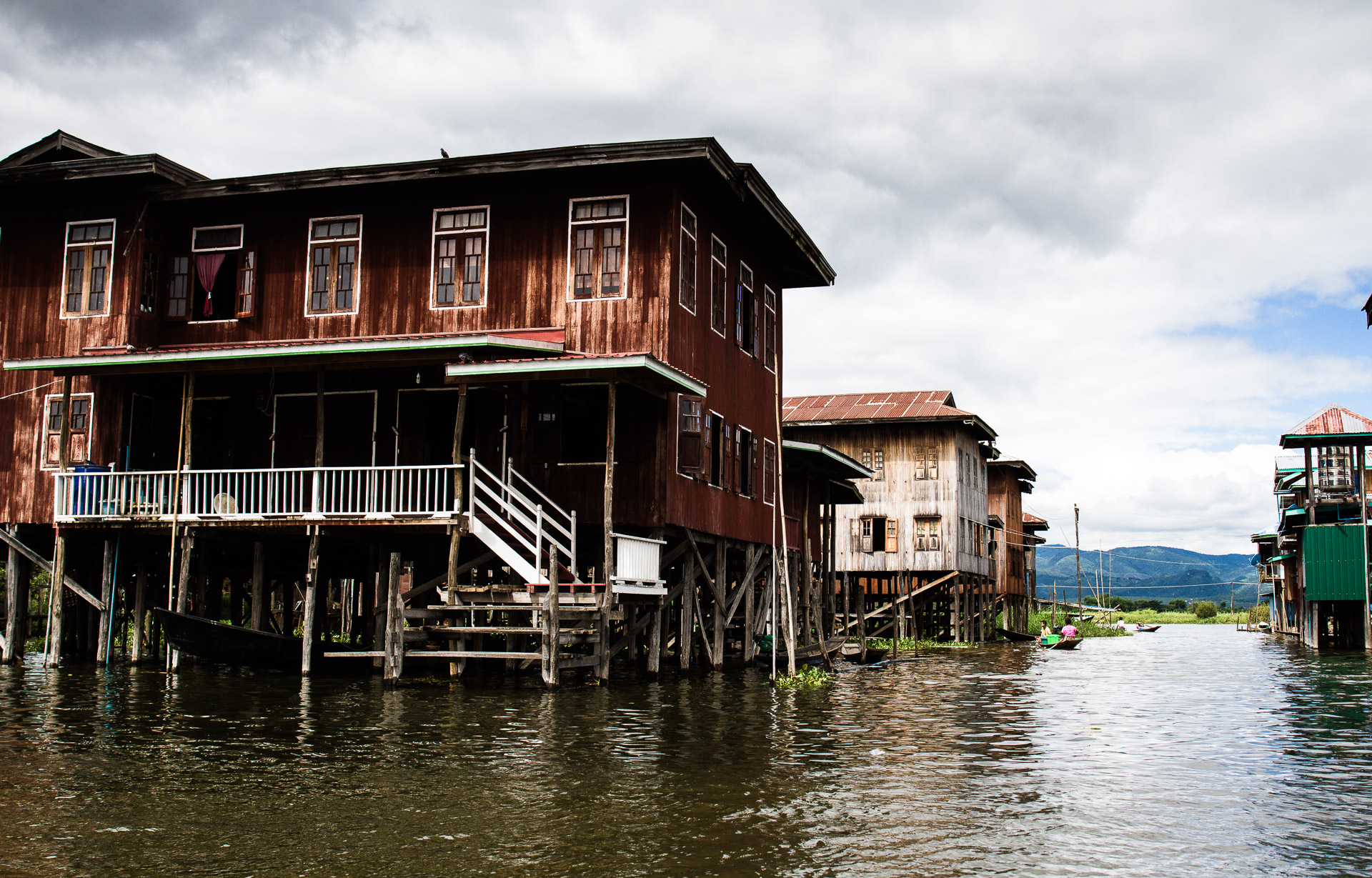
Richer families will have a boat with a motor, but many people use paddles to get around. The Intha, the largest ethnic group who live on the lake, often use the traditional “foot paddling” method, wrapping their leg around the oar and using a circular motion to move it back and forwards.
